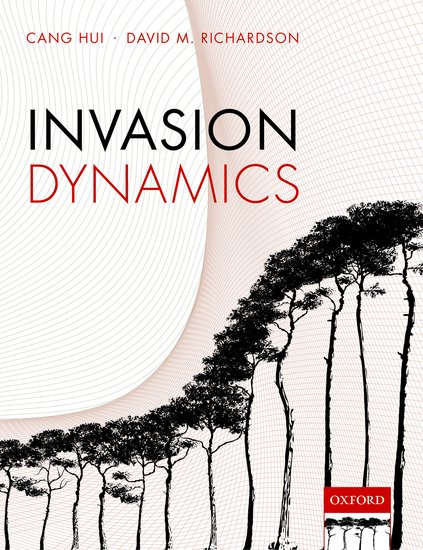Hui, C. & Richardson, D.M. (2017) Invasion dynamics. Oxford University Press
 Humans have moved organisms around the world for centuries but it is only
relatively recently that invasion ecology has grown into a mainstream research
field. This book examines both the spread and impact dynamics of invasive
species, placing the science of invasion biology on a new, more rigorous,
theoretical footing, and proposing a concept of adaptive networks as the
foundation for future research. Biological invasions are considered not as
simple actions of invaders and reactions of invaded ecosystems, but as
co-evolving complex adaptive systems with emergent features of network
complexity and invasibility. Invasion Dynamics focuses on the ecology of
invasive species and their impacts in recipient social-ecological systems. It
discusses not only key advances and challenges within the traditional domain of
invasion ecology, but introduces approaches, concepts, and insights from many
other disciplines such as complexity science, systems science, and ecology more
broadly. It will be of great value to invasion biologists analyzing spread
and/or impact dynamics as well as other ecologists interested in spread
processes or habitat management.
Humans have moved organisms around the world for centuries but it is only
relatively recently that invasion ecology has grown into a mainstream research
field. This book examines both the spread and impact dynamics of invasive
species, placing the science of invasion biology on a new, more rigorous,
theoretical footing, and proposing a concept of adaptive networks as the
foundation for future research. Biological invasions are considered not as
simple actions of invaders and reactions of invaded ecosystems, but as
co-evolving complex adaptive systems with emergent features of network
complexity and invasibility. Invasion Dynamics focuses on the ecology of
invasive species and their impacts in recipient social-ecological systems. It
discusses not only key advances and challenges within the traditional domain of
invasion ecology, but introduces approaches, concepts, and insights from many
other disciplines such as complexity science, systems science, and ecology more
broadly. It will be of great value to invasion biologists analyzing spread
and/or impact dynamics as well as other ecologists interested in spread
processes or habitat management.
Draws insights from invasions involving around 200 species, including examples featuring all major taxonomical groups, covering all parts of the world; Explains methods for modelling species distributions and range dynamics; Explores optimal management strategies for reducing impacts of diverse alien species and invasion syndromes; Forges synergies with complexity science, systems science, and the full domain of ecology; Identifies research priorities and promising research questions in invasion science.
Table of Contents
- Setting the scene
- The dynamics of spread
- Modelling spatial dynamics
- From dispersal to boosted range expansion
- Non-equilibrium dynamics
- Biotic interactions
- Regime shifts
- Community assembly and succession
- Monitoring and management
- Complex adaptive networks
- Managing biological invasions in the Anthropocene